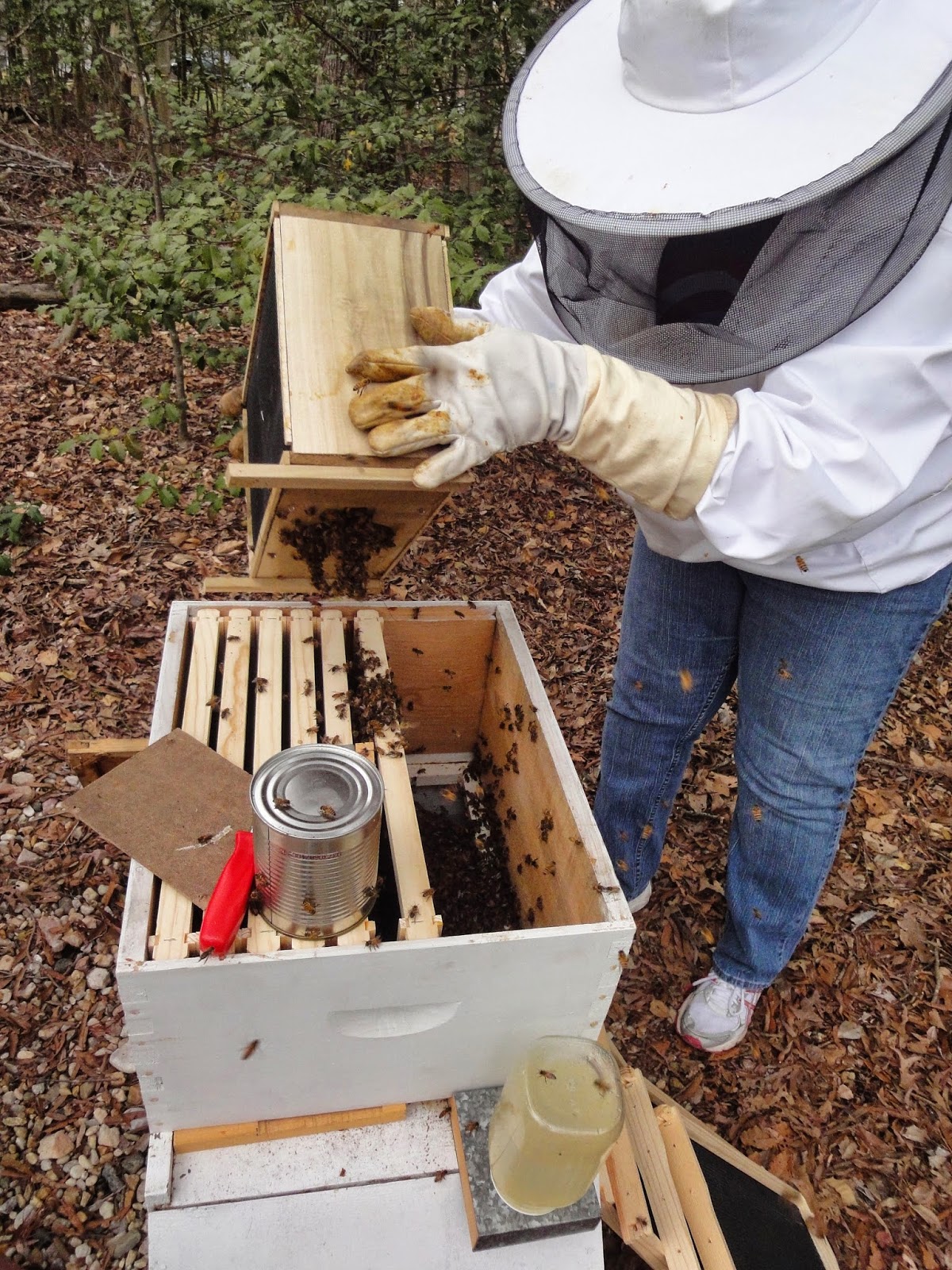Christmas day was sunny in warm with temps in the mid-50s. The bees from the Dmitry hive were buzzing about but there were only two bees flying from the Beagle hive, which just isn't right!
Peaking in through the hole in the inner cover I didn't see any bees. Removing the inner cover and peering down through the frames, I didn't see any bees. The top box was heavy with pollen and uncapped nectar. (Why aren't the bees making honey and capping it??)
Between two frames of the second box were a handful of dead bees still standing on the honeycomb and I could see all the way through the bottom box to the covering of dead bees on the bottom screen.
I spent a lot of time looking at the frames, the few bees still moving, etc. trying to figure out what happened.
Was there any capped honey? Any brood? Any pests present or other visible reason for dead bees?
 I found the queen in the second box - still standing and surrounded by her dead attendants as though frozen in time...
I found the queen in the second box - still standing and surrounded by her dead attendants as though frozen in time...My guess is that the original Queen either swarmed late summer or was killed early fall and this replacement queen never mated. As the population of the hive naturally died off, the bees were less interested in storing food and with no brood, eventually there were too few bees to keep the hive warm. Our few cold snaps with overnight temps below freezing, killed the last of the bees.
There's always the possibility that it was something else that killed the bees, so it's a good idea to send a bunch of bees to the Bees Research Lab at the Beltsville Agricultural Research Center in Beltsville, MD. Free of charge, they perform a diagnostics checking for bacterial and fungal diseases as well as for parasitic mites and other pests harmful to honey bees. Results may take weeks and I'll be sure to report back any findings.





















